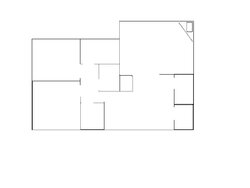Gentlemen, Ladies.
I have gained a tremendous amount of info from your posts. I am new to wood burning stoves.
I am in need of your thoughts. I am looking to replace a Scan 61 (big embarrassing purchase – Blinded by the look, $, and forgot the rest) with a newer, more efficient stove. I live In NE, my house is a ranch style, on a slab and about 2300 sq ft open space design.
The issue is which stove to choose, and concern of where stove is be located: on the farthest corner of the house as I need to move heat through a large room with a high ceiling, large windows (location of wood stove) to the other side where the bedrooms are located.
I have looked at the PE “The Summit” Fusion, Jotul F 50 TL Rangley, Quadra-Fire Step-Top 4300 and the Regency CS2400.
I have added a diagram for additional info.
Any thoughts would be appreciated,
Sam
I have gained a tremendous amount of info from your posts. I am new to wood burning stoves.
I am in need of your thoughts. I am looking to replace a Scan 61 (big embarrassing purchase – Blinded by the look, $, and forgot the rest) with a newer, more efficient stove. I live In NE, my house is a ranch style, on a slab and about 2300 sq ft open space design.
The issue is which stove to choose, and concern of where stove is be located: on the farthest corner of the house as I need to move heat through a large room with a high ceiling, large windows (location of wood stove) to the other side where the bedrooms are located.
I have looked at the PE “The Summit” Fusion, Jotul F 50 TL Rangley, Quadra-Fire Step-Top 4300 and the Regency CS2400.
I have added a diagram for additional info.
Any thoughts would be appreciated,
Sam


